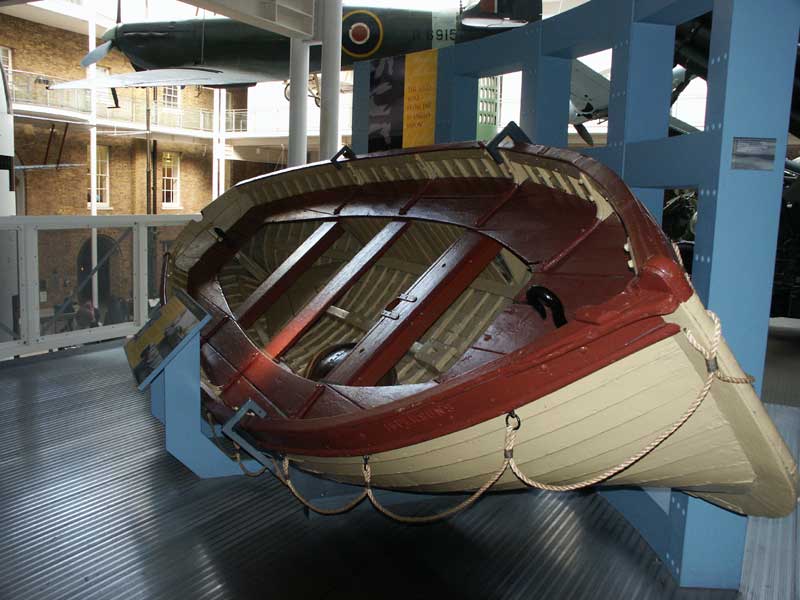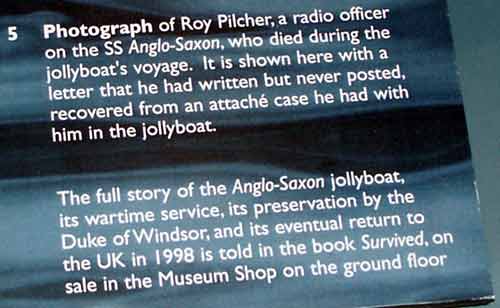|
This is the boat in which two merchant seamen from the SS Anglo-Saxon spent 70 days adrift in the mid-Atlantic after their ship was sunk.
On 21 August 1940, the 5,596 ton Anglo-Saxon, sailing from Newport in Wales to Bahia Blanca, Argentina, with a cargo of coal was attacked and sunk in mid-Atlantic by the German armed merchant raider, Widder. The shelling was so sudden and heavy that only seven of her crew of 41 survived.
The seven men set sail westwards in the jollyboat, with only a boat compass for navigation. They hoped to encounter another vessel or reach an island in the Caribbean. Rations were half a mug of water and half a biscuit a day, with occasional tinned mutton and condensed milk. All food and water had run out by the 34th day.
Five men died from injuries or exhaustion during the voyage. After seventy days the jollyboat came ashore on the island of Eleuthera in the Bahamas. The two survivors, Able Seaman Roy Widdicombe and Robert Tapscott, were taken to hospital in Nassau in a very weak and emaciated state. Both recovered, but Widdicombe later perished at sea when the SS Siamese Prince was sunk in February 1941. Tapscott survived the war.
The jollyboat was given to Mystic Seaport in Connecticut where it was displayed and stored for many years. In November 1997 it was transported from the United States to England through the generosity of Mystic Seaport and P&O Nedlloyd. (text taken from the museum display board).
A Radio Officer, Roy Pilcher was one of the original 7 occupants. See below.
|
|


